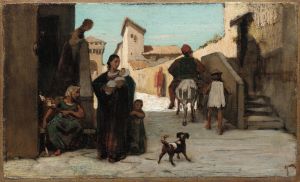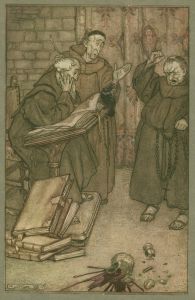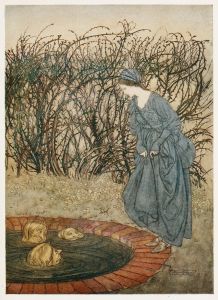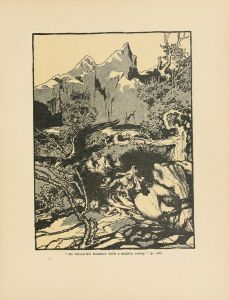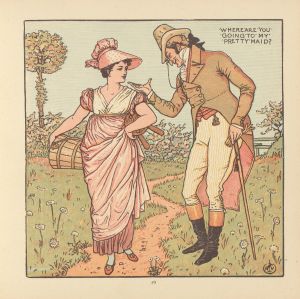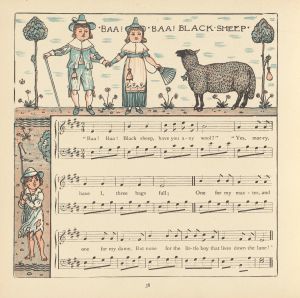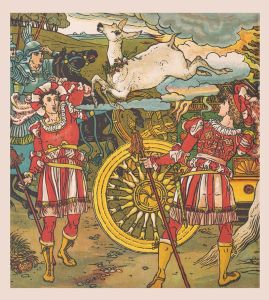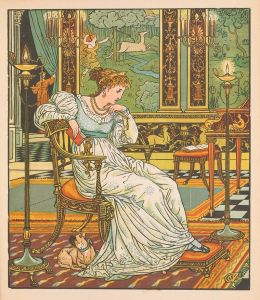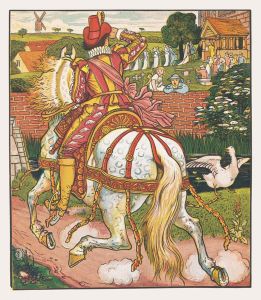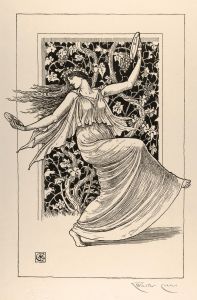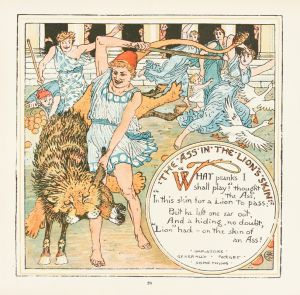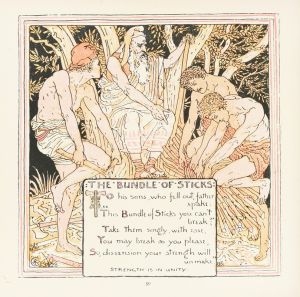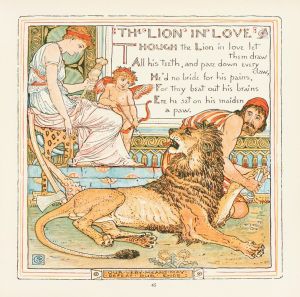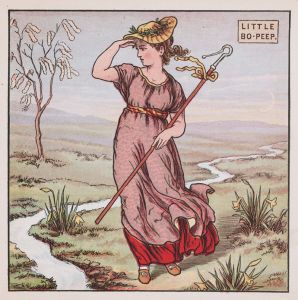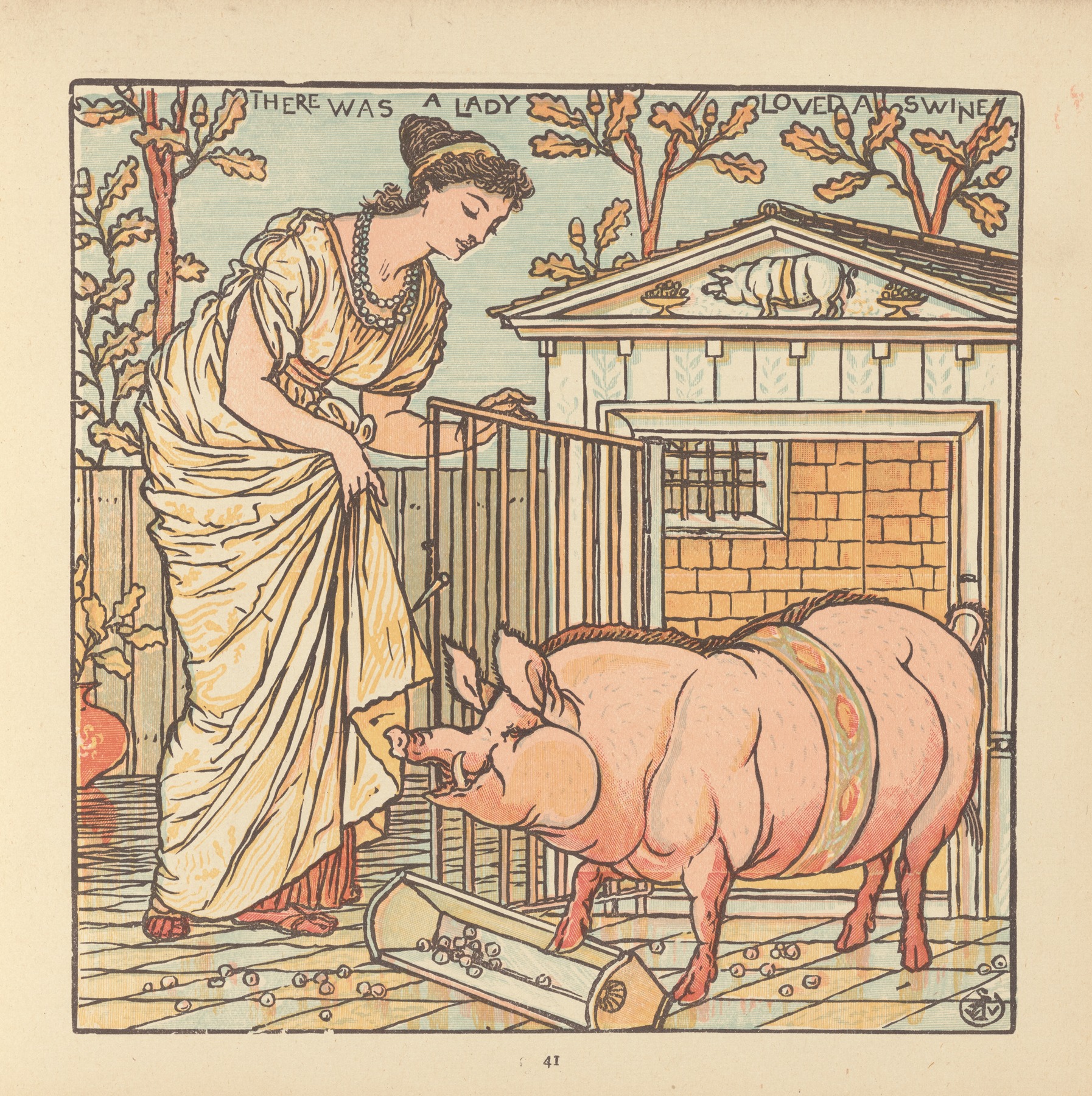
There was a Lady Loved a Swine
A hand-painted replica of Walter Crane’s masterpiece There was a Lady Loved a Swine, meticulously crafted by professional artists to capture the true essence of the original. Each piece is created with museum-quality canvas and rare mineral pigments, carefully painted by experienced artists with delicate brushstrokes and rich, layered colors to perfectly recreate the texture of the original artwork. Unlike machine-printed reproductions, this hand-painted version brings the painting to life, infused with the artist’s emotions and skill in every stroke. Whether for personal collection or home decoration, it instantly elevates the artistic atmosphere of any space.
"There was a Lady Loved a Swine" is an illustration by the renowned English artist and book illustrator Walter Crane. Walter Crane (1845-1915) was a prominent figure in the Arts and Crafts Movement and is best known for his contributions to children's book illustrations during the late 19th and early 20th centuries. His work is characterized by its detailed and decorative style, often incorporating elements of fantasy and folklore.
The illustration "There was a Lady Loved a Swine" is part of Crane's series of nursery rhymes and children's stories. This particular piece is based on a traditional English nursery rhyme of the same name. The rhyme tells the whimsical and somewhat humorous story of a lady who falls in love with a pig, highlighting the absurdity and charm typical of many nursery rhymes from that era.
Crane's illustration captures the essence of the rhyme through his distinctive artistic style. The artwork features the lady and the swine in a pastoral setting, with intricate details that bring the characters and their surroundings to life. Crane's use of vibrant colors and elaborate patterns is evident in this piece, showcasing his ability to create visually engaging and imaginative scenes that appeal to both children and adults.
Walter Crane's illustrations were not only popular for their aesthetic appeal but also for their educational value. He believed that art could play a significant role in the moral and intellectual development of children. As a result, his works often included elements that encouraged storytelling, imagination, and an appreciation for beauty.
Crane's contributions to children's literature were significant during his lifetime and continue to be celebrated today. His illustrations for nursery rhymes and fairy tales have left a lasting legacy, influencing subsequent generations of artists and illustrators. "There was a Lady Loved a Swine" remains a notable example of his talent and creativity, reflecting his dedication to producing high-quality, engaging art for young audiences.
In addition to his work on children's books, Walter Crane was also involved in other artistic endeavors. He was a painter, designer, and a key figure in the Arts and Crafts Movement, which sought to promote traditional craftsmanship and oppose the industrialization of art. Crane's commitment to these principles is evident in his meticulous attention to detail and his emphasis on the decorative arts.
Overall, "There was a Lady Loved a Swine" by Walter Crane is a charming and beautifully executed illustration that exemplifies the artist's skill and his contribution to the world of children's literature. Through his work, Crane has left an indelible mark on the art of illustration, and his legacy continues to be appreciated by art lovers and literary enthusiasts alike.





